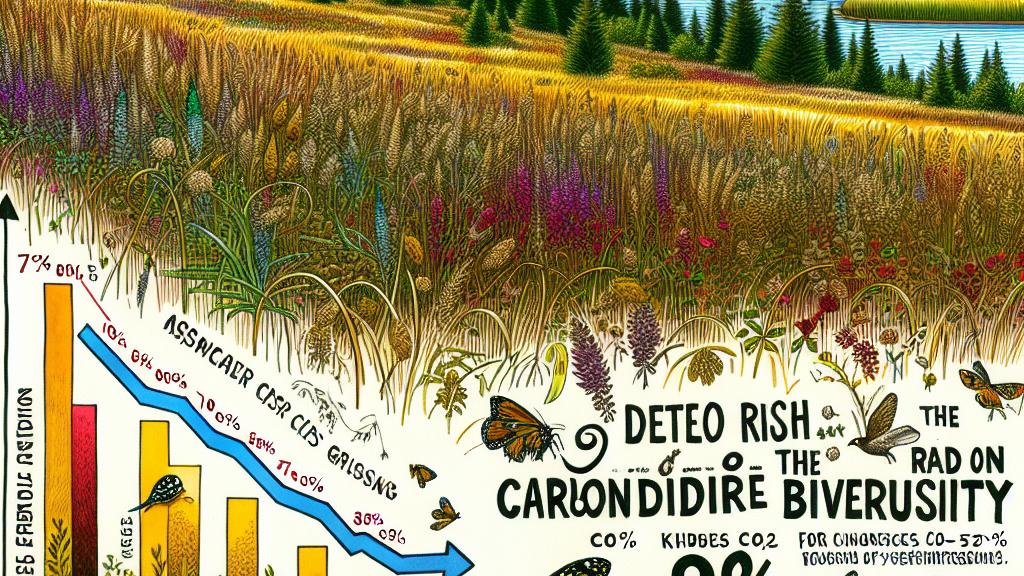Impacts of Carbon Dioxide and Nitrogen on Grassland Biodiversity
Overview
- Research highlights how elevated CO₂ levels can almost triple species losses from nitrogen pollution.
- The findings from Minnesota's grasslands reveal alarming trends in biodiversity decline.
- This underscores the vital importance of biodiversity for ecosystem services, calling for immediate conservation action.

Understanding the Study's Findings
The groundbreaking research conducted over an extensive 24 years in Minnesota's vibrant grasslands uncovers a troubling reality: higher levels of carbon dioxide (CO₂) nearly triple the species losses linked to nitrogen pollution. Previously acknowledged for its environmental threats, nitrogen pollution, combined with elevated CO₂, creates a stark scenario for biodiversity. Initially, at ambient CO₂ levels, the decline in plant species was only 7%. However, as CO₂ levels increased, this loss surged to a shocking 19%. Such a stark contrast illuminates a pressing issue; if we do not act decisively, we stand to lose a significant portion of our ecological diversity—an irreplaceable asset that supports our planet's health.
The Role of Nitrogen Pollution
Nitrogen pollution, largely a result of fossil fuel combustion and intensive agricultural practices, has persistently posed one of the greatest threats to biodiversity. The study highlights how nitrogen's interaction with increased CO₂ levels intensifies competition for sunlight among various plant species. This competition leads to a phenomenon known as 'competitive exclusion,' where dominant species, such as Big bluestem, overshadow weaker ones, consequently stifling biodiversity. For example, lead plant and rigid goldenrod struggle to thrive as their habitat is progressively commandeered by more aggressive competitors. The ramifications of this competitive battle extend beyond mere loss of individual species; they jeopardize essential ecosystem services, including nutrient cycling, soil stability, and water filtration, ultimately affecting countless animal species—from bright butterflies to elusive birds—that depend on diverse plant life for sustenance.
Implications for Biodiversity Conservation
The dire implications of this study send an urgent message to conservationists and policymakers alike: we must prioritize biodiversity preservation. Peter Reich passionately posits that biodiversity is not just valuable but crucial for sustaining essential ecosystem functions that benefit humanity. The escalating challenges posed by nitrogen pollution and carbon emissions leave us at a critical crossroad. If we fail to take action now, the specter of irreversible ecological damage looms ever closer. This research serves as a clarion call, encouraging collaborative efforts to mitigate nitrogen inputs and regulate CO₂ emissions. By safeguarding biodiversity, we ensure not only the continuation of nature's complex web but also a healthier, more sustainable planet for future generations. Together, let's champion the cause of biodiversity, recognizing its inherent value and the profound impact it has on our shared environment.

Loading...